
As with most long-strand pasta, vermicelli, a thin spaghetti-type noodle, likes to get sticky and clump together when cooked. Traditionally, vermicelli noodles are made from wheat flour, just like any other pasta. However, a rice version of vermicelli is widely used in a variety of Asian noodle dishes. Although the two vermicelli types are prepared and served in very different ways, both have issues with stickiness that can be prevented with careful preparation.
Vermicelli Pasta Noodles
Step 1
Fill a large pot with water and bring to a boil. Use about 1 quart of water for every 4 ounces of vermicelli you plan to cook. The large amount of water gives the noodles room to move about, which reduces the chances of them clumping and sticking together. You can also opt to add 1 or 2 tablespoons of salt to the water before boiling, which adds flavor to the pasta.
Step 2
Add the vermicelli noodles to the pot once the water has started to boil. Stir for the first 2 minutes with a wooden spoon to keep the noodles from sticking, as they tend to do in the beginning due to the amount of starch the pasta releases into the water. It will start to dissipate in a few minutes.
Step 3
Cook the pasta in the boiling water for no more than 5 to 6 minutes, or until al dente -- tender, but with a slight bite. Vermicelli is thinner than spaghetti, so it will cook relatively quickly. Check for tenderness after about 4 minutes to avoid overcooking, another cause of sticky noodles.
Step 4
Drain the hot water from the vermicelli as soon as it is done. Use the noodles immediately, whether you toss it in a pasta sauce or you prepare them for a pasta salad. Only rinse the noodles, which further reduces stickiness, if you are using them for a cold dish. For warm pasta dishes, you want some stickiness from the starch to remain on the noodles so that sauce will stick to it.
Rice Vermicelli
Step 1
Place the dried bunch of rice vermicelli into a large, heat-proof mixing bowl and pour boiling hot water over them so they are fully submerged.
Step 2
Stir the rice vermicelli carefully every minute or so to loosen them up as they start to soften. It should only take 4 or 5 minutes to fully rehydrate and cook, so taste often for tenderness. Overcooking the rice vermicelli will make them stickier. If you plan on putting them in a stir-fry, cook them for about half the time, as they will finish in the wok.
Step 3
Drain the hot water from the rice vermicelli when they are done, then rinse with cool water to stop the cooking process. Rinsing thoroughly also helps reduce the starchiness that makes the vermicelli stick together.
Step 4
Drizzle the rice vermicelli with a little sesame oil if you are not using them right away. If you need to prepare another element to the dish, the vermicelli will start to stick again as they cool, so adding a bit of sesame oil, used in many Asian-based dishes, keeps them from sticking while adding a bit of flavor.
Step 5
Cover the bowl of rice vermicelli with a damp cloth until you are ready to use them. Keeping the rice vermicelli moist will also reduce the amount of sticking as they sit and will also prevent them from hardening again. Some clumping may still occur, but they should loosen up again when you add them to your dish.
Related Articles
How to Cook Large Amounts of Noodles ...

The Best Way to Cook Spaghetti Noodles

How to Cook Lasagna Noodles so They ...
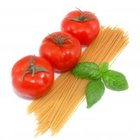
How to Make Spaghetti Noodles

How to Cook Banh Pho

How to Cook Vietnamese Rice Stick ...

How to Boil Pasta Noodles
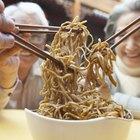
How to Cook Chinese Pasta With Soy Sauce

Do You Need to Cook Fresh Made Lasagna ...

How to Cook Udon
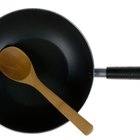
How to Fry Raw Spaghetti
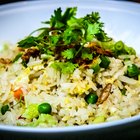
How to Make Hibachi Rice

How to Cook Hu Tieu Noodles

Cooking Dried Banh Pho Noodles

How to Add Noodles to Soup
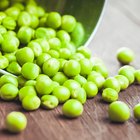
How to Fry Peas
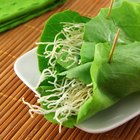
How to Make Crispy Rice Noodles for ...

How to Cook Luglug Cornstarch Noodles

How to Cook Spaghetti to Use the Next ...
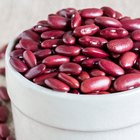
Ten Kinds of High-Fiber Beans
References
Resources
Tips
- If you are cooking the rice vermicelli for a soup, cook them in the hot soup broth instead of plain hot water.
- You can keep rice vermicelli submerged in cold water for up to two days at room temperature or in the refrigerator before cooking.
Warnings
- Avoid adding oil to the wheat-based vermicelli pasta noodles unless a recipe indicates otherwise. The oil will keep the sauce from sticking to the noodles.
Writer Bio
Based in Los Angeles, Zora Hughes has been writing travel, parenting, cooking and relationship articles since 2010. Her work includes writing city profiles for Groupon. She also writes screenplays and won the S. Randolph Playwriting Award in 2004. She holds a Bachelor of Arts in television writing/producing and a Master of Arts Management in entertainment media management, both from Columbia College.
Photo Credits
Stockbyte/Stockbyte/Getty Images